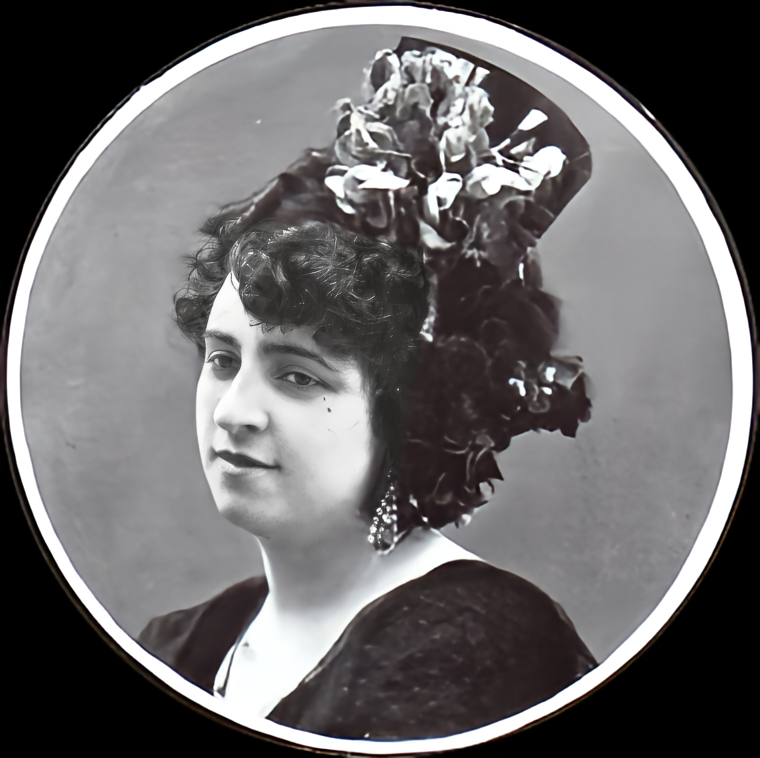Cuplé on:
[Wikipedia]
[Google]
[Amazon]
 The cuplĂ© was a popular risquĂ© Spanish theatre song style in the late years of the 19th century. From 1893 to 1911 the songs were a feature of the "gĂ©nero Ănfimo" (lowest type)
The cuplĂ© was a popular risquĂ© Spanish theatre song style in the late years of the 19th century. From 1893 to 1911 the songs were a feature of the "gĂ©nero Ănfimo" (lowest type)
 The cuplĂ© was a popular risquĂ© Spanish theatre song style in the late years of the 19th century. From 1893 to 1911 the songs were a feature of the "gĂ©nero Ănfimo" (lowest type)
The cuplĂ© was a popular risquĂ© Spanish theatre song style in the late years of the 19th century. From 1893 to 1911 the songs were a feature of the "gĂ©nero Ănfimo" (lowest type) cabaret
Cabaret is a form of theatrical entertainment featuring music song, dance, recitation, or drama. The performance venue might be a pub, casino, hotel, restaurant, or nightclub with a stage for performances. The audience, often dining or drinking, ...
theatre sung by solo female singers, or men in drag, and attended mainly by men. But in the second decade of the 20th century the cuplé, in a more respectable form, became more family-friendly and was associated with the makings of stars of the Spanish theatre such as Aurora Jauffret, "La Goya",Bradley S. Epps, Despina Kakoudaki ''All about Almodóvar: A Passion for Cinema'' 2009 "Even the cuplé, the song with which Montiel becomes identified, derives from a tradition of risqué musical numbers filled with sexual innuendo performed by women." and Lola Montes, who sang the cuplé , which, after adaptation, became the official hymn of the Spanish Legion
For centuries, Spain recruited foreign soldiers to its army, forming the foreign regiments () such as the Regiment of Hibernia (formed in 1709 from Irishmen who fled their own country in the wake of the Flight of the Earls and the Penal la ...
.
The term comes from French ''couplet'', but the poetic form couplet
In poetry, a couplet ( ) or distich ( ) is a pair of successive lines that rhyme and have the same metre. A couplet may be formal (closed) or run-on (open). In a formal (closed) couplet, each of the two lines is end-stopped, implying that there ...
in Spanish is a ''pareado'' or ''dĂstico''. The cuplĂ© prefigured the copla of the 1930s.
Notable cupletistas
* MarĂa Antinea (1915–1991), Spanish actress, vedette, dancer, cupletista and tonadillera * La Argentinita (1898–1945), Spanish-Argentine flamenco dancer (bailaora), choreographer and singer * Bella Dorita (1901–2001), Spanish cabaret singer, dancer, and vedette * Paquita Escribano (1880–1970), Spanish singer (cupletista and tonadillera) * Julia Fons (1882–1973), Spanish singer and cupletista *La Fornarina
The ''Portrait of a Young Woman'' (also known as ''La fornarina'') is a painting by the Italian High Renaissance master Raphael, made between 1518 and 1519. It is in the Galleria Nazionale d'Arte Antica in Palazzo Barberini, Rome.
It is proba ...
(1884–1915), Cuplé singer
* Celia Gámez (1905–1992), Argentine film actress, icon of the Golden Age of Spanish theatre
* Úrsula López (1870–1966), Spanish Zarzuela, variety singer, and businesswoman
* Raquel Meller
Francisca Romana Marqués López (9 March 1888 – 26 July 1962), better known as Raquel Meller, was a Spanish diseuse, cuplé, and tonadilla singer and actress.
She was an international star in the 1920s and 1930s, appearing in several films a ...
(1888-1962), Spanish diseuse, cuplé, and tonadilla singer and actress.
* Lola Montes (1898–1983), Spanish singer
* La Chelito (1885–1959), Cuban-born Spanish cuplé singer, and theater business owner
* Preciosilla (1893–1952), Spanish cupletista
* Olga Ramos (1918–2005), Spanish cupletista, violinist, and actress
* Rosita Rodrigo (1891–1959), Spanish actress, vedette, dancer and songwriter
* Teresita Zazá (1893–1980), Spanish tonadillera, cupletista, and actress
References
{{DEFAULTSORT:Cuple Music of Spain Cupletistas